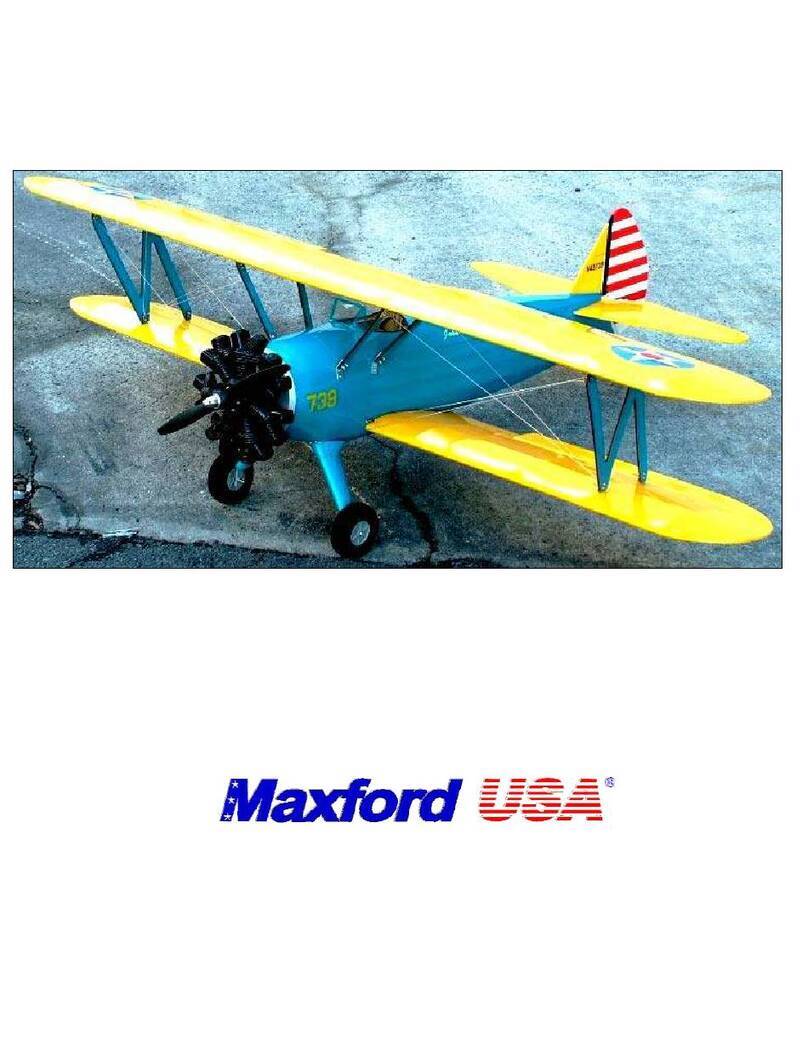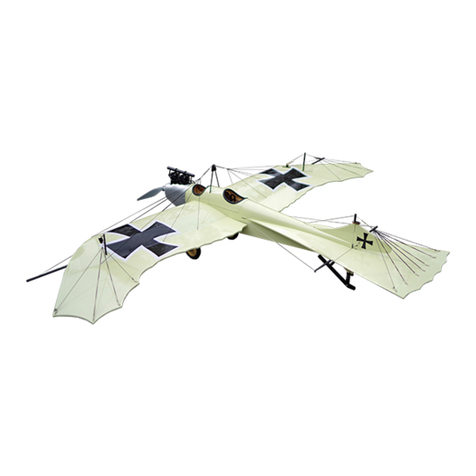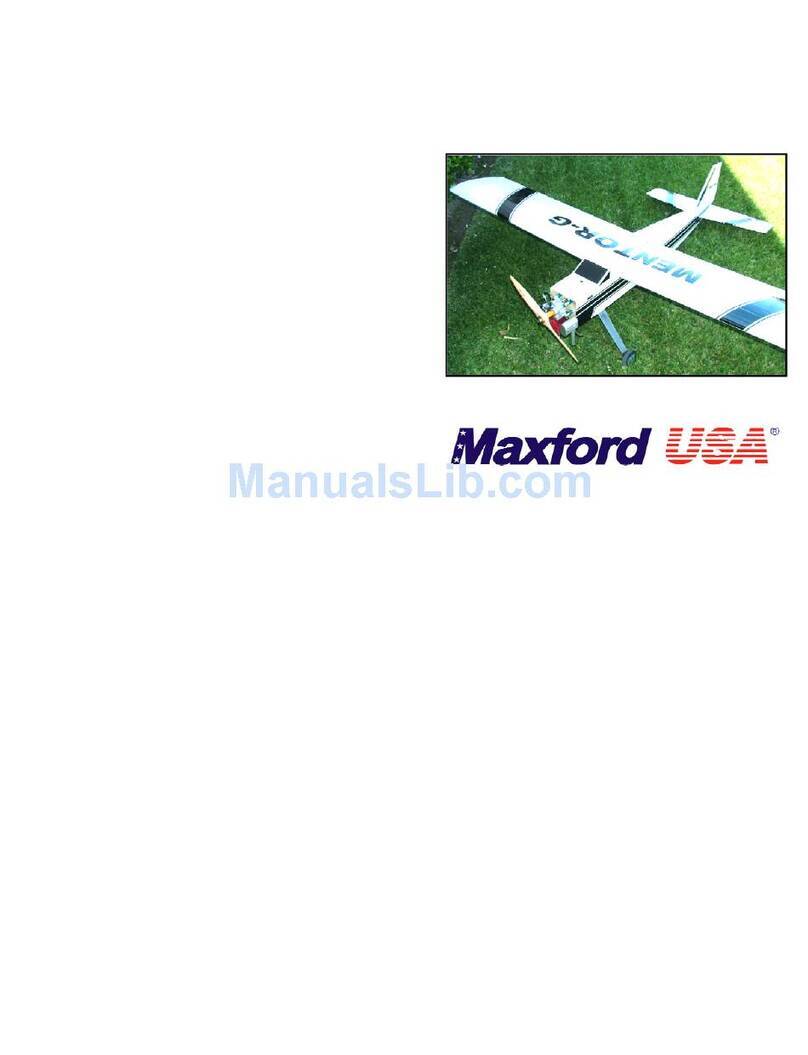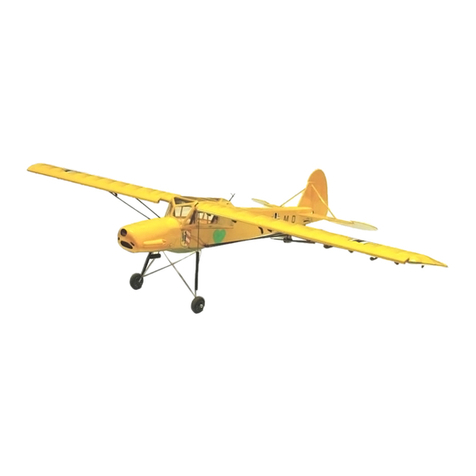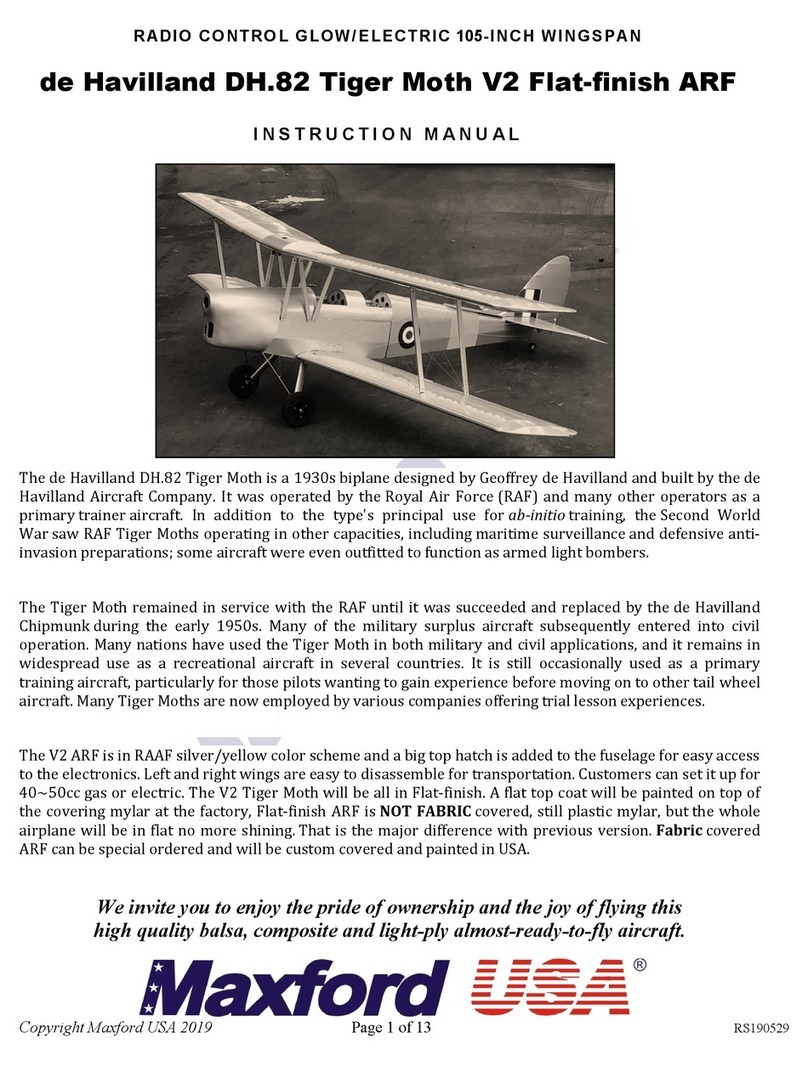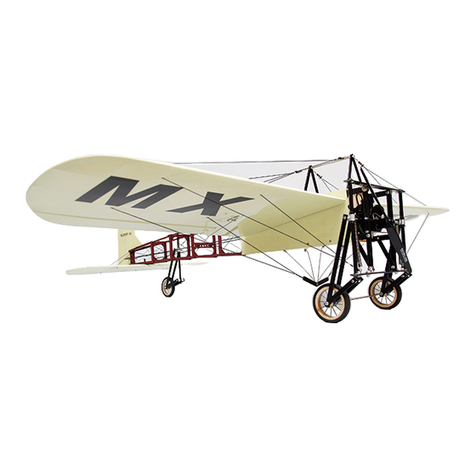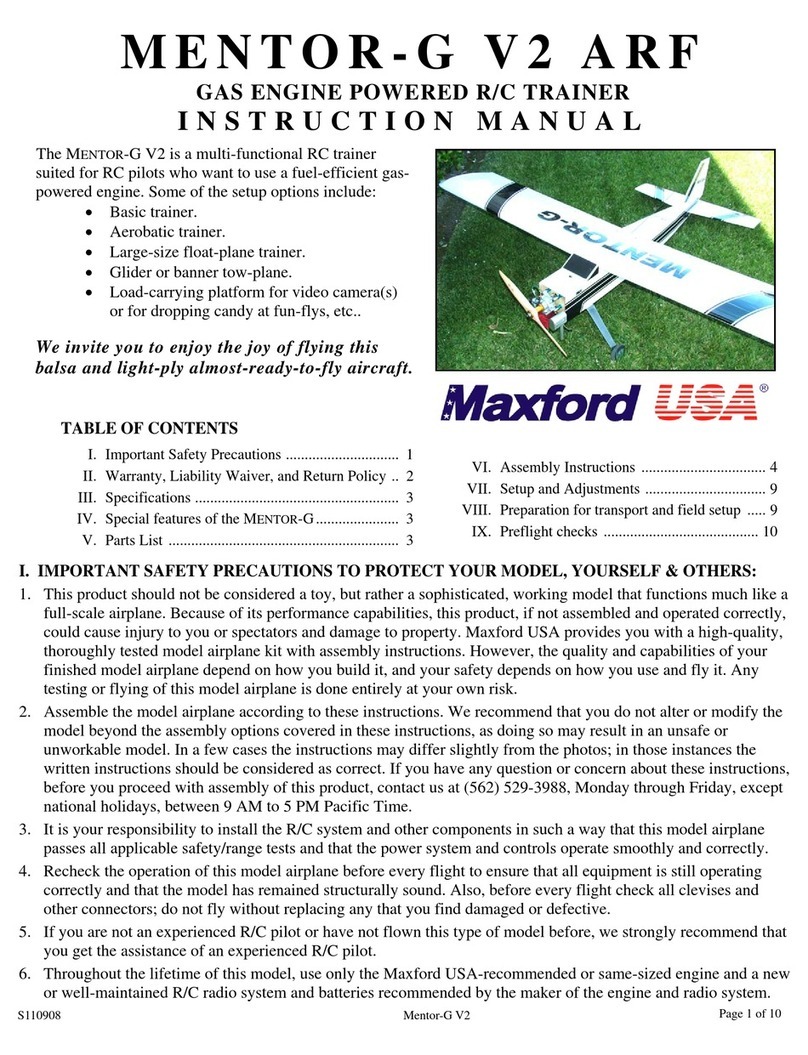
Copyright 2014 Maxford USA Page 2of 18 #S140424
TABLE OF CONTENTS
I. Safety precautions & assembly tips .................... 2
V. Special features .................................................... 4
II. Warranty, liability waiver & return policy .......... 3
VI. Assembly Instructions ......................................... 5
III. Specifications ...................................................... 4
VII. Setup and adjustments ........................................ 17
IV. Parts list ............................................................... 4
VIII. Storage, field setup & preflight checks .............. 18
I. SAFETY PRECAUTIONS & ASSEMBLY TIPS
(IMPORTANT –READ THIS SECTION BEFORE YOU BEGIN ASSEMBLY)
1. This product should not be considered a toy, but rather a sophisticated, working model that functions much like a full-
scale airplane. Because of its performance capabilities, this product, if not assembled and operated correctly, could
cause injury to you or spectators and damage to property. Maxford USA provides you with a high-quality, thoroughly
tested model airplane kit with assembly instructions. However, the quality and capabilities of your finished model
airplane depend on how you assemble it, and your safety depends on how you use and fly it. Any testing or flying of
this model airplane is done entirely at your own risk.
2. Assemble this model airplane according to these instructions. Do not alter or modify the model beyond the assembly
and power-system options covered in these instructions, as doing so may result in an unsafe or unworkable model. If
the instructions differ from the photos, the written instructions should be considered correct. If you have any question
or concern about these instructions, before you proceed with assembly of this product, contact your dealer or speak to a
Maxford USA customer service representative at 562-529-3988 (Monday through Friday, except national holidays,
9 AM to 5 PM Pacific Time).
3. While this kit has been flight-tested to meet or exceed our rigid performance and reliability standards in normal use, if
you elect to perform any extremely high-stress flying, such as racing or advanced aerobatics, or if you install a much
larger power system than specified, you (the buyer or user of this product) are solely responsible for taking any and all
necessary steps to reinforce the high-stress points and/or substitute hardware that is more suitable for such increased
stresses.
4. Throughout the lifetime of this model, use only the Maxford USA-recommended power system and a new or well-
maintained radio-control system.
5. It is your responsibility to install the receiver and connect the R/C components in such a way that this model airplane
passes all applicable safety/range tests and that the power system and controls operate correctly and smoothly.
6. Recheck the operation of this model airplane before every flight to ensure that all equipment is still operating correctly
and that the model has remained structurally sound. Also before every flight, check all electrical, control and structural
connections; do not fly without replacing any that you find damaged or worn.
7. Before you begin assembly of this model airplane, read all instructions and test-fit each part to ensure you fully
understand the instructions and that no parts are missing, damaged or unsatisfactory. Temperature and/or humidity
differences between the factory, our warehouse and your home or workshop may dictate the need for slight
adjustments to the wings, struts and/or the vertical or horizontal stabilizer‟s mounting surfaces to ensure proper
alignment; however, we recommend you contact us before you attempt any such adjustments.
8. To help ensure the security of your servo connections, we recommend use of optional Maxford USA
servo-extension safety clips.
9. If you are not an experienced R/C pilot or have not flown this type of model before, we strongly urge
you to get assistance from an experienced R/C pilot.
10. You may use 30-minute epoxy to attach critical parts permanently (such as where the horizontal and vertical stabilizers
attach at the end of the fuselage) and apply a threadlock compound to secure all airframe components from vibration.
11. If you have concern about the security of any factory fabrication procedure(s), you may apply 30-minute epoxy around
the perimeter of such part(s) as an extra safety precaution.
12. After adjusting each clevis, secure the clevis to its threaded rod with CA adhesive.
For additional safety, hold the clevis closed by
adding a small piece of tubing (not supplied) as shown at the right.
13. For your safety, do NOT leave any strands of wire poking out from the end of any crimp
tube. Exposed small steel strands can be sharp enough to cut or abrade skin!


